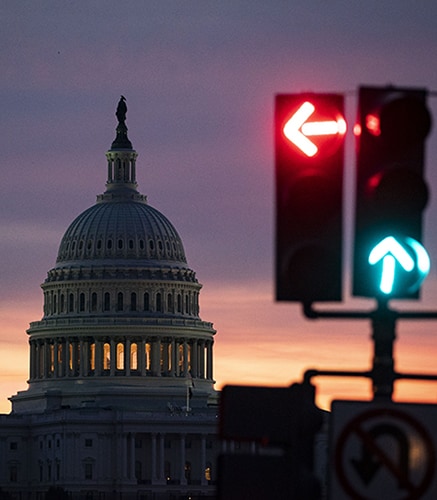Donors should consider effective giving strategies before new legislation takes effect in 2026.
Signed into law this summer, the One Big Beautiful Bill Act introduced several provisions impacting the tax benefits of charitable giving in 2026 and beyond. Key among these are reductions to the value of itemized deductions for charitable contributions, particularly for those in the top income tax bracket. And while 2025 is drawing to a close, there is nevertheless time to review giving plans and take advantage of favorable tax treatment.
What are the key changes?
The One Big Beautiful Bill Act (OBBBA) placed a floor as well as a ceiling on the deductibility of charitable gifts in 2026 — commonly referred to as “shave and a haircut” rules.
- The Shave: If you itemize, you will only be able to deduct the portion of your charitable contributions that exceeds 0.5% of your adjusted gross income, regardless of income level. The only exception to this floor is for cash contributions to qualified public charities, which qualify for a new above-the-line deduction of up to $1,000 for single filers and $2,000 for married couples filing jointly.
- The Haircut: Those in the top 37% tax bracket will have a portion of all itemized deductions disallowed. A “haircut” of 2% applies to the lesser of total net itemized deductions you claim for the year, or the amount of your taxable income subject to the 37% tax bracket (i.e., income in excess of $640,600 for single filers or $768,700 for joint filers).
While OBBBA offers other charitable tax benefits for those who plan to use the standard deduction in 2026, the net effect of these tax provisions will reduce the tax benefits for those who itemize — especially for those with larger charitable giving programs.
What are the strategies to consider before year-end?
Accelerate Charitable Gifts Into 2025. “Bunching” planned gifts from future years into 2025 will realize a higher total tax benefit than the same nominal gift spread over future years. For instance, for those in the 32% tax bracket, making a $50,000 gift in tax year 2025 as opposed to a $10,000 donation yearly between 2025 and 2029 would result in a tax savings of more than $10,000. As with all the strategies discussed, those considering accelerating gifts will want to work with their advisors to carefully assess how it impacts your overall plan, including your liquidity profile, portfolio allocation and long-term goals.
Use a Donor-Advised Fund (DAF). Donor-advised funds are accounts sponsored by public charities that consider donor recommendations for future grants, provide anonymity if desired, and offer simplified administration. Contributions to DAFs are deductible immediately in 2025, and assets held in the DAF can grow tax-free, maximizing the value of gifts made in future years. With markets in 2025 hovering at or near all-time highs, this can be a particularly effective year-end strategy for the donation of marketable securities (see “Give appreciated securities” below.)
The Northern Trust Charitable Giving Program
DAFs are a streamlined, flexible and tax-efficient solution for giving. Northern Trust simplifies the approach further, while providing access to our Philanthropic Advisory Services team. Learn more about the Northern Trust Charitable Giving Program.
Give through a private foundation. While private foundations provide similar tax benefits to DAFs, they offer full control over grantmaking and the ability to establish an enduring legacy. For those with private foundations, accelerating future contributions into 2025 allows you to take advantage of higher deduction amounts this year for future gifts.
Consider qualified charitable distributions. In 2025, IRA owners, including owners of inherited IRAs, who are over 70 ½ can donate up to $108,000 from an IRA directly to a charitable organization, avoiding all income recognition on the distribution. Moreover, qualified charitable distributions (QCDs) count toward the donor’s required minimum distribution for the year of the gift. Because a QCD is an exclusion from income and not an itemized deduction, it will not be penalized by the “shave and a haircut” rules that go into effect in 2026 — making QCDs an excellent strategy for satisfying gifting commitments while managing future income recognition.
Give appreciated securities. With equity markets near all-time highs at the end of 2025, making gifts of appreciated securities held for at least a year will allow you to avoid potentially substantial capital gain recognition — while simultaneously receiving a charitable deduction equal to the fair market value of the asset at time of gift. This can also help you rebalance your portfolio exposures in a tax-efficient manner.



